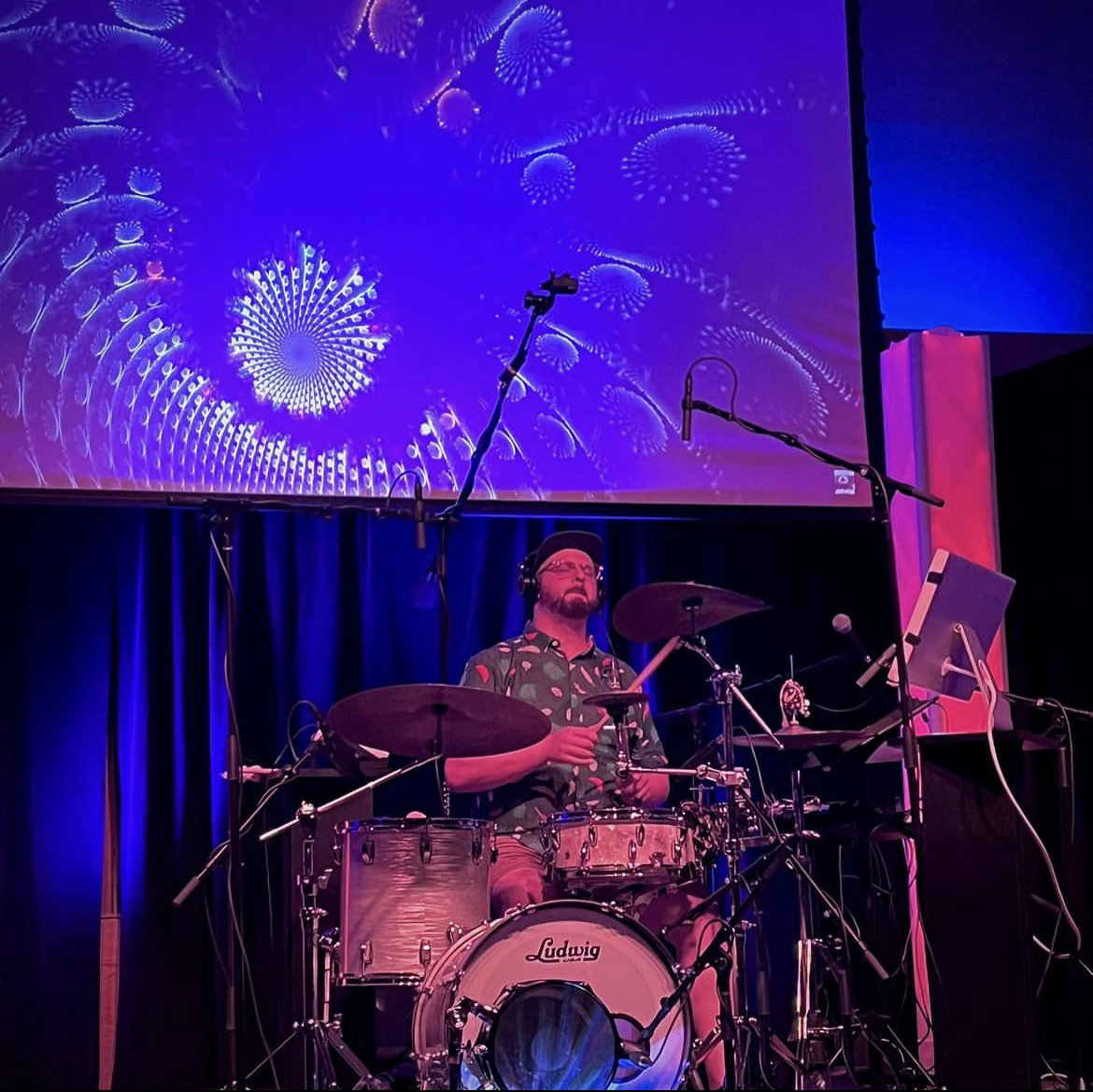From Studio to Stage: Behind-the-Scenes of Cohlapser’s SOLD OUT Live Electronic Music Performance


By: Jason Cohen, Drums & Electronic Music Production Instructor
Over the course of nearly a decade, two monumental aspirations have fueled my creative journey, simultaneously driving me forward and filling me with trepidation.
First – Write and release an album (completed on 6/28/23).
Explore the album “Parallel Destinies” .
Learn About The Writing Process .
Second – Play my first solo show fusing electronics / live drums (Completed 9/15/23). Read on to learn about the process of preparing for a live electronic music show.
After I finished my album I knew it was time to follow through with my second goal, playing a show. I decided to book a concert about eight months out with no plan of how I would execute it. I knew if I didn’t box myself in and commit to a deadline, I would never take action and would eventually look back with regret later in life.
During the initial few months I didn’t invest much time into figuring stuff out. I think I pretended like the concert wasn’t happening until the anxiety of having to present something finally started to creep in.
That’s when I made the conscious decision to figure this out. However, there was a crucial question that lingered in my mind: What exactly was “this”?
Drawing from my background of improvisational music in various contexts, I knew I wanted that element to be a significant part of the overall experience. Simultaneously, I wanted to perform all the songs from my album.
I devised a plan: I would incorporate 5 to 10 minutes of improvisation before each song, using elements from the tracks, software instruments, analog synthesizers, and effects in order to create seamless transitions into each composition.
STEP 1
I meticulously charted out a list of my aspirations for my performance, accompanied by an intricate blueprint detailing the necessary gear and techniques required to bring my vision to fruition.
STEP 2
I extracted the individual tracks from every composition in my album and loaded them into a new Ableton Live Set. This gave me the freedom to manipulate, control, and remix in real time.
STEP 3
In the spirit of transforming pre-existing ideas, I ran those tracks through lots of audio effects, birthing an abundance of derivative tracks that would serve an arsenal of fresh ideas I could improvise with.
STEP 4
Inside Ableton, I constructed effects racks, enabling me to transform sounds in real-time. These racks were filled with reverbs, delays, distortion, glitch effects, etc.
STEP 5
I figured out the routing to send MIDI clips from my original compositions to my external synthesizers. This allowed me to reimagine melodies and harmonies on the fly.
STEP 6
My canvas expanded further as I built tracks with instrument racks/samplers, filled with an assortment of textures and foley sounds, ready to be woven into the fabric of the moment.
STEP 7
I color-coded each track so I could easily identify them from Ableton PUSH Controller.
STEP 8
I mapped all the effects parameters that I wanted to explore in real-time to my Midi Fighter Twister (fancy midi controller). This midi control became my gateway to real-time exploration, allowing me to navigate and shape the sonic landscape with finesse.
STEP 9
Next I dedicated two months to immersive improvising, weaving together my elaborate setup, tools, and techniques. Throughout this period, I documented a comprehensive list of every conceivable glitch or hiccup that could possibly disrupt the flow of my performance, and devise solutions for each.
STEP 10
Finally I added acoustic drums into the mix and spent a month learning the drums parts while intertwining improvisations and transitions. I worked out imperfections, refining into what would define my complete live performance.
I was completely blown away by the overwhelming love and support I felt from the SOLD OUT audience of friends, family, and students. Everyone was actively listening and along for the ride on this brand new adventure. I honestly couldn’t think of a more perfect way to make my debut in a solo performance.
Was my performance flawless? Absolutely not. In fact, prior to my final two songs I decided to open the floor for a Q & A session, drawing a parallel between my performance and how comedians experiment with new material in an intimate club setting to refine their craft. They expect to have things go wrong and actively seek feedback for ways to improve. I was embarking on a similar journey. It’s true that not everything went according to plan, yet I left with an increased sense of empowerment and heartwarming encouragement to continue on this journey.
Technical
Philosophical
Sign up with your email address to receive news and updates.